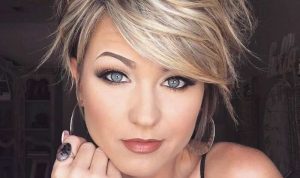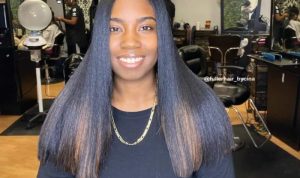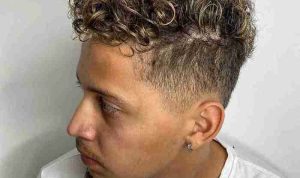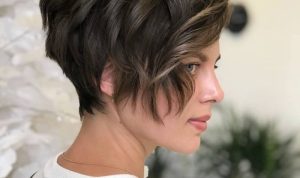Understanding Thin Hair & Long Hairstyles: Thin Hair Long Hairstyles
Thin hair long hairstyles – Achieving voluminous, healthy-looking long hair when you have thin hair can present unique challenges. Understanding the nuances of thin hair, its contributing factors, and appropriate styling techniques is crucial for maximizing your hair’s potential. This section will explore the characteristics of thin hair, differentiate it from fine hair, and highlight the importance of hair health in creating the illusion of thickness and volume.
Challenges of Styling Long, Thin Hair
Long, thin hair often lacks body and can appear limp or flat. Gravity pulls it down, making it difficult to maintain volume and create stylish looks. It’s also more prone to breakage and damage, requiring extra care and gentle handling. Common styling challenges include achieving volume at the roots, preventing a stringy appearance, and maintaining styles throughout the day.
Fine Hair vs. Thin Hair
While often used interchangeably, fine hair and thin hair are distinct. Fine hair refers to the individual strand’s diameter – it’s simply thin in width. Thin hair, on the other hand, refers to the overall density or number of hair strands on your scalp. You can have fine hair and a lot of it (thus, thick hair), or thick hair strands but a low number of them (thin hair).
Factors Contributing to Thin Hair
- Genetics: Hereditary factors play a significant role in hair density and thickness.
- Hormonal Changes: Fluctuations in hormones, such as during pregnancy or menopause, can affect hair growth and density.
- Medical Conditions: Certain medical conditions, such as thyroid disorders or anemia, can lead to hair thinning.
- Nutritional Deficiencies: A lack of essential nutrients, like protein and iron, can impact hair health and growth.
- Stress: Chronic stress can disrupt the hair growth cycle, resulting in hair loss and thinning.
- Harsh Hair Treatments: Excessive heat styling, chemical treatments, and tight hairstyles can damage hair and contribute to thinning.
Importance of Hair Health for Voluminous Long Hairstyles
Healthy hair is the foundation for any successful long hairstyle, especially for those with thin hair. A healthy scalp promotes strong hair growth, and minimizing damage prevents breakage and hair loss. A nourishing hair care routine, including a balanced diet, is essential for achieving and maintaining volume.
Hairstyle Choices for Thin, Long Hair
Several long hairstyles are particularly flattering for thin hair, focusing on creating the illusion of volume and minimizing the appearance of limpness. Strategic layering, clever styling, and the right cut can make a significant difference. The following section details several options and offers guidance on choosing the best style based on your face shape and hair texture.
Long Hairstyles Suitable for Thin Hair
These styles utilize layering and strategic cuts to maximize volume and movement.
- Long Layered Cut: This classic style uses varying lengths to create texture and movement, preventing the hair from looking flat.
- Long A-Line Bob: This cut is slightly shorter in the back and gradually gets longer towards the front, adding volume and shape.
- Face-Framing Layers: Strategically placed layers around the face draw attention to your features and create a fuller look.
- Long, Side-Swept Bangs: Bangs can add volume to the front and create a more balanced look.
- Slightly Textured Lob: A long bob with subtle texture adds movement and dimension, preventing a flat look.
Comparison of Hairstyles: Volume and Maintenance
| Hairstyle | Volume | Maintenance |
|---|---|---|
| Long Layered Cut | High | Medium |
| Long A-Line Bob | Medium-High | Medium |
| Face-Framing Layers | Medium | Low |
| Long, Side-Swept Bangs | Medium | Medium |
| Slightly Textured Lob | Medium-High | Medium-High |
Choosing a Hairstyle Based on Face Shape and Texture
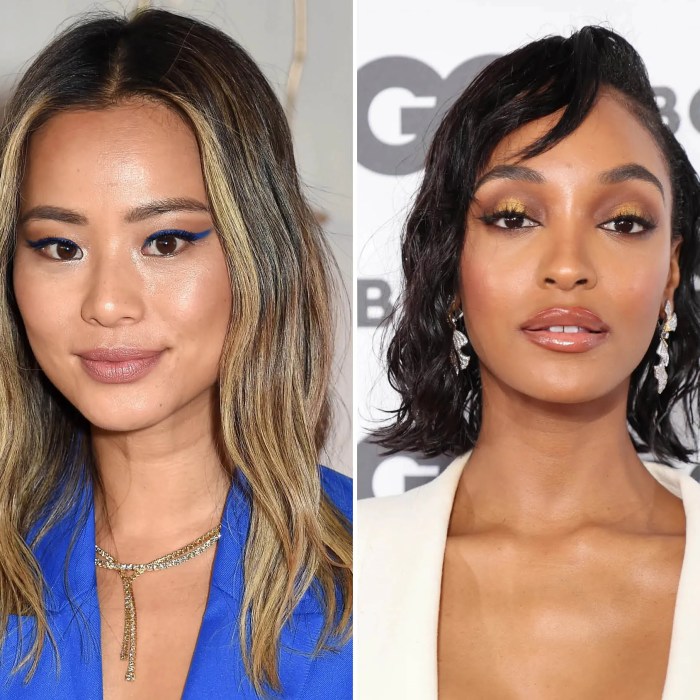
Source: allure.com
Consider your face shape when choosing a hairstyle. For example, long layers are generally flattering on most face shapes, while bangs can soften a strong jawline. Hair texture also influences the choice; finer hair may benefit from shorter layers to add volume, whereas thicker fine hair can handle more length.
Benefits of Hair Extensions for Volume and Length
Hair extensions are a popular option for adding volume and length to thin hair. They provide instant fullness and allow you to experiment with various hairstyles. However, it’s crucial to choose high-quality extensions and have them professionally applied to minimize damage to your natural hair.
Styling Techniques for Thin, Long Hair
Proper styling techniques are essential for creating the illusion of thicker, more voluminous hair. This section will cover techniques for adding root lift, utilizing braiding for visual thickness, and employing texturizing products for enhanced body.
Creating Volume at the Roots with a Round Brush and Hairdryer
- Apply a volumizing mousse or spray to damp hair, focusing on the roots.
- Section your hair and use a round brush to lift each section at the roots while blow-drying.
- Direct the airflow from the hairdryer upwards, towards the scalp, to create lift.
- Once dry, gently cool the hair with the hairdryer to set the style.
Braiding Techniques for Visual Thickness
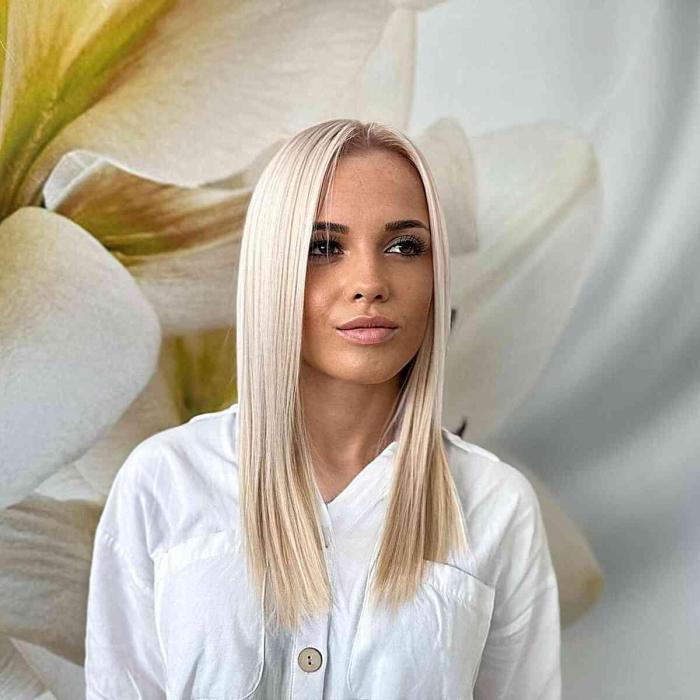
Source: latest-hairstyles.com
Various braiding techniques can create visual thickness and add interest to thin hair. A simple French braid or a fishtail braid can add texture and dimension, making the hair appear fuller.
- French Braid: This classic braid starts at the crown and incorporates strands from the sides as you braid down.
- Fishtail Braid: This braid uses a unique weaving technique that creates a textured, visually thicker braid.
- Dutch Braid: Similar to a French braid, but the braid is woven under instead of over the strands, creating a raised, more voluminous effect.
Using Texturizing Products for Thicker Hair
Texturizing sprays, mousses, and pastes can add grip and texture to thin hair, making it appear thicker. Apply these products to damp or dry hair, focusing on the mid-lengths and ends to create separation and volume.
Volumizing Shampoos and Conditioners: Benefits and Drawbacks
Volumizing shampoos and conditioners are designed to cleanse and condition hair without weighing it down. They often contain ingredients that lift the hair at the roots and add body. However, overuse can sometimes strip the hair of its natural oils, leading to dryness.
Hair Care Routine for Thin, Long Hair
A consistent hair care routine is crucial for maintaining the health and thickness of thin, long hair. This includes gentle cleansing, nourishing conditioning, and the use of appropriate styling products. A healthy diet and lifestyle also play a vital role in hair growth and overall health.
Daily Hair Care Routine for Hair Growth and Thickness
- Wash hair gently with a volumizing shampoo, avoiding harsh scrubbing.
- Condition the ends of the hair to prevent dryness and breakage.
- Apply a leave-in conditioner or serum for added moisture and protection.
- Style hair gently, avoiding excessive heat or pulling.
- Protect hair from the sun with a hat or UV-protective spray.
Hair Products Suitable for Thin, Long Hair
Choose products specifically formulated for fine or thin hair. Look for lightweight formulas that add volume without weighing the hair down.
- Volumizing Shampoo and Conditioner
- Lightweight Leave-in Conditioner
- Heat Protectant Spray
- Texturizing Spray or Mousse
- Hair Serum or Oil (used sparingly)
Importance of Diet and Lifestyle for Hair Health, Thin hair long hairstyles
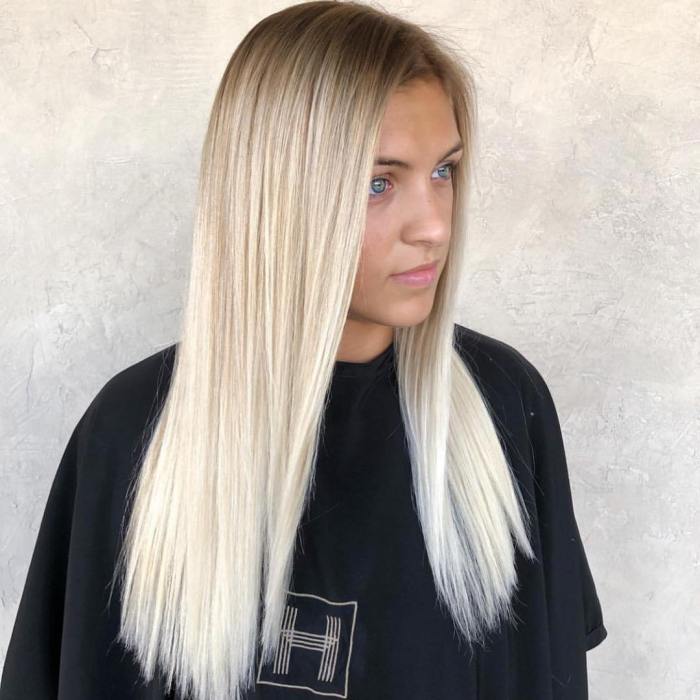
Source: xuzinuo.com
A balanced diet rich in protein, iron, and vitamins is essential for healthy hair growth. Staying hydrated and managing stress levels also contribute to overall hair health. Avoid smoking and excessive alcohol consumption.
Preventative Measures to Avoid Further Hair Thinning
- Avoid harsh chemical treatments and excessive heat styling.
- Be gentle when brushing and styling your hair.
- Use a wide-tooth comb to detangle wet hair.
- Get regular trims to remove split ends.
- Consider consulting a dermatologist or trichologist if you experience significant hair loss or thinning.
Illustrative Examples of Long Hairstyles for Thin Hair
Several long hairstyles can create the illusion of thicker, more voluminous hair. Strategic layering, careful styling, and the addition of bangs can dramatically enhance the overall look and feel.
Long Layered Hairstyle
A long layered hairstyle uses varying lengths to create movement and texture, preventing the hair from looking flat and lifeless. The layering technique removes weight, adding volume and making the hair appear thicker. Subtle layers around the face frame the features, drawing attention away from any perceived thinness.
Long Hairstyle with Bangs
Bangs can add volume and dimension to a long hairstyle, particularly for those with thin hair. Side-swept bangs create a soft, feminine look, while blunt bangs can add a bold statement. The bangs draw attention to the face and create a fuller appearance at the top of the head.
Sleek, Straight Long Hairstyle
A sleek, straight long hairstyle can be surprisingly flattering for thin hair, provided it is styled correctly. To avoid a limp look, use a smoothing serum or oil to add shine and prevent frizz. A flat iron can create a sleek, polished look, but it’s crucial to use a heat protectant spray beforehand.
Hairstyle Incorporating Braids or Updos
Braids and updos are excellent ways to create the illusion of thicker hair. A loose braid adds texture and volume, while a carefully constructed updo can create height and shape. These styles gather the hair, making it appear more substantial than it might otherwise appear when worn loose.
FAQ Guide
Can I use heat styling tools daily on thin hair?
Achieving volume with thin, long hair can be challenging, often requiring specific styling techniques. However, consider the visual impact of adding height; for inspiration, check out these chic short hair+half up and down hairstyles , as they demonstrate how strategic lifts and teasing can create a similar effect. Adapting these principles to longer lengths can significantly enhance the appearance of thin hair, resulting in a fuller, more voluminous look.
Excessive heat styling can damage thin hair, making it more prone to breakage. Limit heat styling to a few times a week and always use a heat protectant spray.
How often should I wash my thin hair?
Washing too often can strip natural oils, leading to dryness and a limp appearance. Aim for every other day or every two days, depending on your hair’s oiliness.
What are some good natural remedies for thin hair?
Essential oils like rosemary and lavender, as well as regular scalp massages, can stimulate hair growth. A healthy diet rich in protein and vitamins is also crucial.
Are there any specific vitamins that help with hair growth?
Biotin, vitamin D, and iron are often cited as beneficial for hair growth. Consult a doctor or nutritionist to determine if you have any deficiencies.


